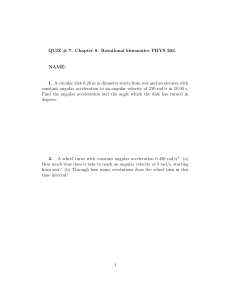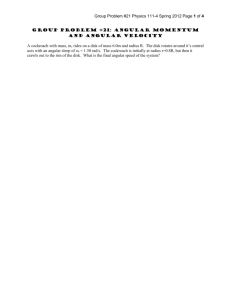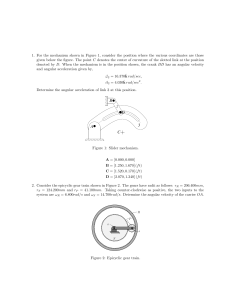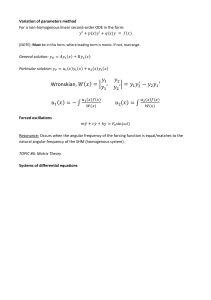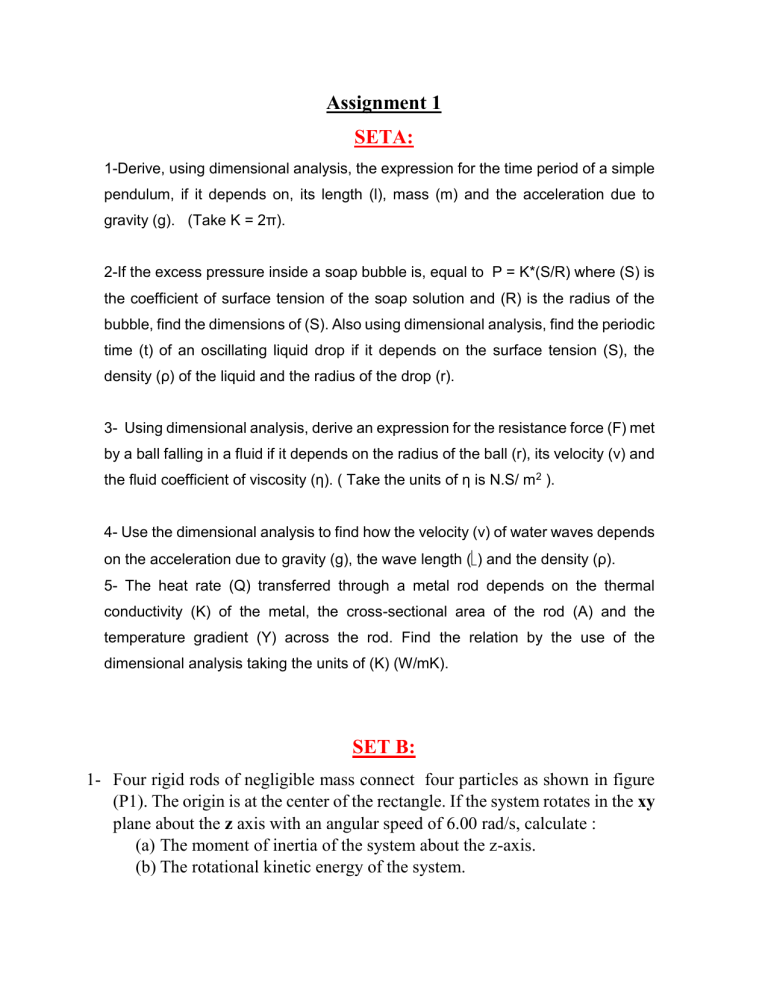
Assignment 1 SETA: 1-Derive, using dimensional analysis, the expression for the time period of a simple pendulum, if it depends on, its length (l), mass (m) and the acceleration due to gravity (g). (Take K = 2π). 2-If the excess pressure inside a soap bubble is, equal to P = K*(S/R) where (S) is the coefficient of surface tension of the soap solution and (R) is the radius of the bubble, find the dimensions of (S). Also using dimensional analysis, find the periodic time (t) of an oscillating liquid drop if it depends on the surface tension (S), the density (ρ) of the liquid and the radius of the drop (r). 3- Using dimensional analysis, derive an expression for the resistance force (F) met by a ball falling in a fluid if it depends on the radius of the ball (r), its velocity (v) and the fluid coefficient of viscosity (η). ( Take the units of η is N.S/ m2 ). 4- Use the dimensional analysis to find how the velocity (v) of water waves depends on the acceleration due to gravity (g), the wave length () and the density (ρ). 5- The heat rate (Q) transferred through a metal rod depends on the thermal conductivity (K) of the metal, the cross-sectional area of the rod (A) and the temperature gradient (Y) across the rod. Find the relation by the use of the dimensional analysis taking the units of (K) (W/mK). SET B: 1- Four rigid rods of negligible mass connect four particles as shown in figure (P1). The origin is at the center of the rectangle. If the system rotates in the xy plane about the z axis with an angular speed of 6.00 rad/s, calculate : (a) The moment of inertia of the system about the z-axis. (b) The rotational kinetic energy of the system. 2- Find the net torque on the wheel as shown in Figure(P2) about the axle center if a=10.0 cm and b=25.0 cm. Fig.(P2) Fig.(P1) 3- During a certain period, the angular position of a swinging door is described θ=5.00+10.0t+2.00𝑡 2 , where θ is in radians and t is in seconds. Determine the angular position, angular speed, and angular acceleration of the door at:(a) at t=0 (b) at t=3.00 s. 4- A centrifuge in a medical laboratory rotates at an angular speed of 3600 rev/min. When switched off, it rotates 50 times before coming to rest. Find the constant angular acceleration of the centrifuge. 5- A wheel 2.00 m in diameter lies in a vertical plane and rotates with a constant angular acceleration of 4.00 rad/𝑠 2 . The wheel starts at rest at t=0, and the radius vector of a certain point P on the rim makes an angle of 57.3° with the horizontal at this time. At t=2.00 s, find : (a) The angular speed of the wheel. (b) The tangential speed and the total acceleration of the point P. (c) The angular position of the point P. 6- A grinding wheel is in the form of a uniform solid disk of radius 7.00 cm and mass 2.00 kg. It starts from rest and accelerates uniformly under the action of the constant torque of 0.600 N.m that the motor exerts on the wheel. (a) How long does the wheel take to reach its final operating speed of 1200 rev/min? (b) Through how many revolutions does it turn while accelerating? 7- An electric motor turns a flywheel through a drive belt that joins a pulley on the motor and a pulley that is rigidly attached to the flywheel, as shown in next figure (P7). The flywheel is a solid disk with a mass of 80.0 kg and a diameter of 1.25 m. It turns on a frictionless axle. Its pulley has much smaller mass and a radius of 0.230 m. If the tension in the upper (taut) segment of the belt is 135 N and the flywheel has a clockwise angular acceleration of 1.67 rad/s2, find the tension in the lower (slack) segment of the belt. 8- Figure (P8) shows the drive train of a bicycle that has wheels 67.3 cm in diameter and pedal cranks 17.5 cm long. The cyclist pedals at a steady angular rate of 76.0 rev/min. The chain engages with a front sprocket 15.2 cm in diameter and a rear sprocket 7.00 cm in diameter. (a) Calculate the speed of a link of the chain relative to the bicycle frame. (b) Calculate the angular speed of the bicycle wheels. (c) Calculate the speed of the bicycle relative to the road. (d) What pieces of data, if any, are not necessary for the calculations? Fig.(P7) Fig.(P8)
